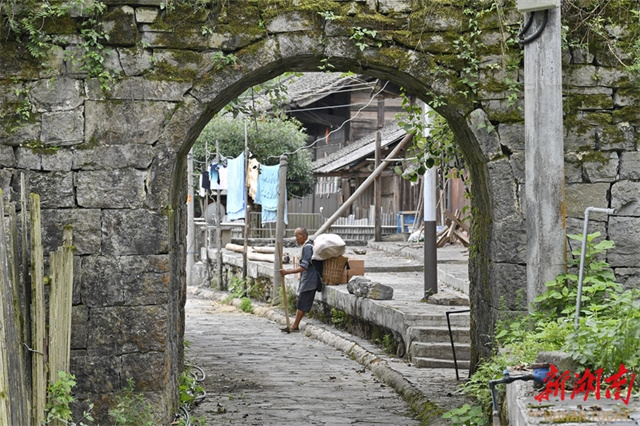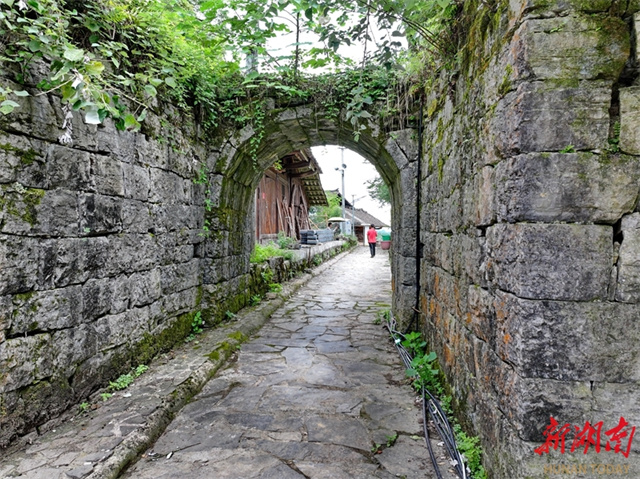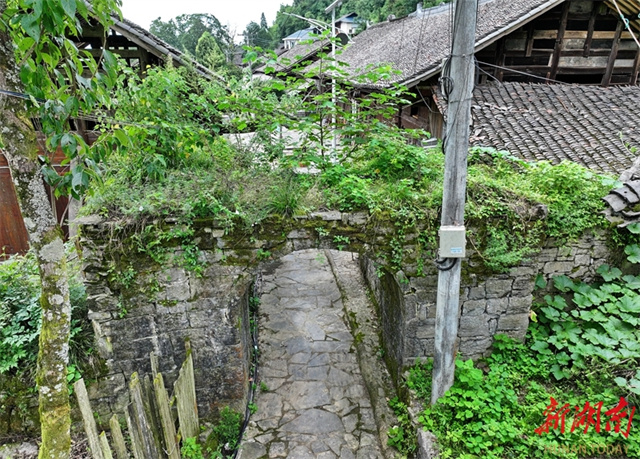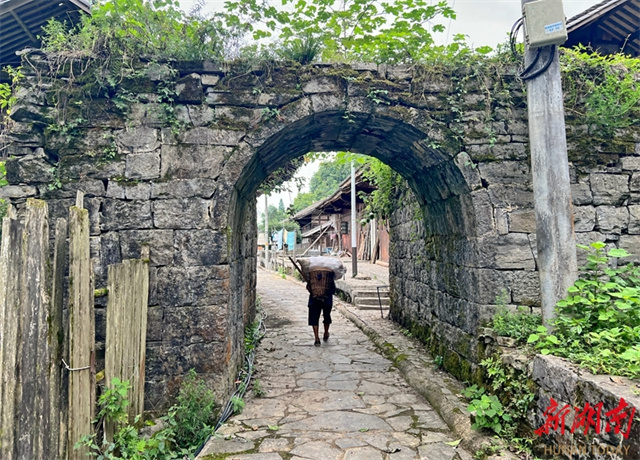
The photo, taken on August 24, shows an imposing ancient fortress gate standing at the entrance of Xinyin Village in Hulu Town, Baojing County. This is the northernmost and best-preserved alpine citadel gate among the remains of the Miaojiang Great Wall or the Southern Great Wall of China which can be dated back to the Ming and Qing dynasties (1368-1911). In Baojing County, there are over 70 such military fortress ruin sites from the Ming and Qing dynasties, primarily distributed across five townships: Fuxing, Shuiyin, Hulu, Yangchao, and Tuzha. These sites serve as important witnesses to the local history, ethnicity, military affairs, and culture, providing valuable physical materials for the study of the politics, economy, culture, and military strategies of western Hunan during the Ming and Qing dynasties. (Photo/Tong Di, Hunan Daily)

The photo, taken on August 24, shows an imposing ancient fortress gate standing at the entrance of Xinyin Village in Hulu Town, Baojing County. This is the northernmost and best-preserved alpine citadel gate among the remains of the Miaojiang Great Wall or the Southern Great Wall of China which can be dated back to the Ming and Qing dynasties (1368-1911). In Baojing County, there are over 70 such military fortress ruin sites from the Ming and Qing dynasties, primarily distributed across five townships: Fuxing, Shuiyin, Hulu, Yangchao, and Tuzha. These sites serve as important witnesses to the local history, ethnicity, military affairs, and culture, providing valuable physical materials for the study of the politics, economy, culture, and military strategies of western Hunan during the Ming and Qing dynasties. (Photo/Tong Di, Hunan Daily)

The photo, taken on August 24, shows an imposing ancient fortress gate standing at the entrance of Xinyin Village in Hulu Town, Baojing County. This is the northernmost and best-preserved alpine citadel gate among the remains of the Miaojiang Great Wall or the Southern Great Wall of China which can be dated back to the Ming and Qing dynasties (1368-1911). In Baojing County, there are over 70 such military fortress ruin sites from the Ming and Qing dynasties, primarily distributed across five townships: Fuxing, Shuiyin, Hulu, Yangchao, and Tuzha. These sites serve as important witnesses to the local history, ethnicity, military affairs, and culture, providing valuable physical materials for the study of the politics, economy, culture, and military strategies of western Hunan during the Ming and Qing dynasties. (Photo/Tong Di, Hunan Daily)

The photo, taken on August 24, shows an imposing ancient fortress gate standing at the entrance of Xinyin Village in Hulu Town, Baojing County. This is the northernmost and best-preserved alpine citadel gate among the remains of the Miaojiang Great Wall or the Southern Great Wall of China which can be dated back to the Ming and Qing dynasties (1368-1911). In Baojing County, there are over 70 such military fortress ruin sites from the Ming and Qing dynasties, primarily distributed across five townships: Fuxing, Shuiyin, Hulu, Yangchao, and Tuzha. These sites serve as important witnesses to the local history, ethnicity, military affairs, and culture, providing valuable physical materials for the study of the politics, economy, culture, and military strategies of western Hunan during the Ming and Qing dynasties. (Photo/Tong Di, Hunan Daily)
This article is from the Hunan Provincial Government www.enghunan.gov.cn.
Translator: Xiao Juan
Chinese source: hunantoday








